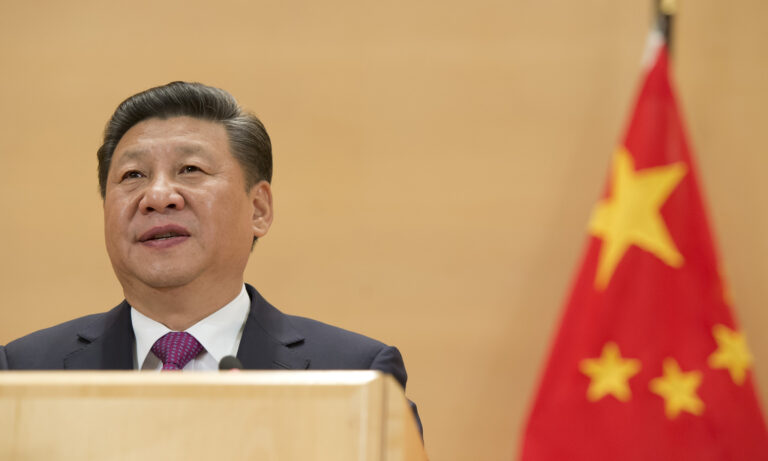
If 17+1 is indeed a “pioneering feat of great power diplomacy with Chinese characteristics”, as Chinese state media claim, Beijing should be worried.
Leaders of six countries decided to pass on the 17+1 summit held on February 9, the highest number since the format was formed in 2012. This was a significant setback for China’s Xi, who chaired the summit for the first time, instead of his distant number two, Li Keqiang. So, the slight from the CEE countries might be taken personally.
The Real Beijing Consensus
Interestingly, there is no mention of the next summit in the ‘Beijing Action Plan’, which was released instead of ‘Guidelines’, also a first in the history of the format. It may be that simply no date has been set, which is understandable due to the unforeseen end to the pandemic. It may also be that the format will switch to a different schedule, e.g. once in two years, as has already been rumored in the past.
The most likely option, however, is that the future of the summit continuing in the current form is simply uncertain and no agreement was reached on this issue. Beijing will surely try to find a face-saving way out of this, no matter the outcome.
Curiously, Xi Jinping referred to a “new consensus” reached at the summit. There is little indication about what the consensus should be, as there were no ‘Guidelines’ passed at this summit and it consisted of leaders speaking at each other, rather with each other.
Ironically, the lack of a final consensus document enabled the Chinese state media to present Xi’s speech at the summit as the main outcome. Yet, the real consensus forming among most of the CEE states seems to be that the cooperation with China under the format is sorely lacking. Xi’s promises of stepped-up imports and provision of Chinese vaccines will hardly change this structural trend.
The calls to leave the format for good are now growing in CEE countries. Lithuania was considering skipping the summit completely and these efforts are set to continue, in cooperation with other Baltic countries. Representatives of the opposition Czech Pirate party, which has a good chance to form a coalition government after the October election, have openly called for a coordinated ‘CEExit’ from the format.
The Lesson for CEE Countries
Should the format go, few tears will be shed. However, it should be appreciated that the experience of dealing with China that the CEE countries gained via the format has been helpful and this should also enable them to have a stronger voice on EU’s China policy going forward.
It is important to point out that despite the focus on the high-level meetings there was a myriad of different-level dialogues on various sectoral issues going on (as extensively mapped in CHOICE’s landmark study), which made the CEE countries establish intensive contact with China and learn the negotiation chops. Sure, a significant part of these activities has mainly served Chinese propaganda and political theater (or whatever the purpose of China-CEE dance camps was), leading to CEE’s retrenchment. Still, the experience and contacts gained should not be discounted.
Moreover, in negotiations over the conclusions of the summit, CEE countries have managed to make their voice heard, even while facing the asymmetry of negotiating with the Chinese behemoth. On the insistence of participating EU countries, it has always been stressed that EU language and respect for EU standards be included in summit documents. EU representatives have started to attend the summit as observers, making it more transparent.
On the other hand, very little of China’s most favored diplomatic jargon got in. For example, in the case of the Beijing summit, the draft of guidelines from Beijing floating around before the event took place included references to ‘community of shared destiny’ and support for China’s Belt and Road Initiative. The final ‘Beijing Action plan’ had none of that.
Charting a Common Course
In the end, one should not lose focus of the larger picture. If it is not clear by now, it should be said again — CEE countries are not the main avenue for achieving Chinese interests in the EU.
Sure, China has strived to do just that via the format, but the real focus of China’s interest has always been in Western Europe, chiefly in Germany and France. When it mattered, as during the CAI negotiations, it was Angela Merkel who pushed the deal beyond the finish line.
The CEE countries should bring their own experience of dealing with China on the table in the EU and make their voices heard. Should the format live on in some form, there should be more efforts on the side of the participating CEE countries, or at least the EU countries, to coordinate their views and approaches to cooperation.
China’s activities in the EU’s ‘backyard’ of Western Balkans also served as a necessary wake-up-call for Brussels. For countries like Czechia or Slovakia, the integration of Western Balkan countries into the EU has been one of the chief foreign policy objectives. An important part of this agenda is the harmonization of their external policies with Brussels. Charting a common course on China would be a great place to start.
Written by
Filip Šebok
Filip Šebok is an analyst at CEIAS. He was a China Research Fellow and Project Manager at the Association for International Affairs (AMO) in Prague, Czech Republic.


